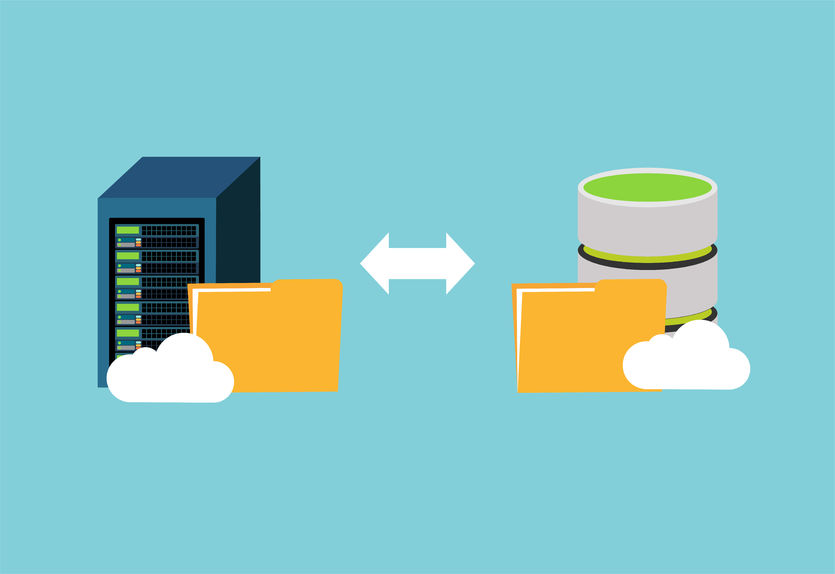Picture this: you’re browsing the web, enthusiastic about exploring new websites or accessing your favorite online services, when suddenly you’re confronted with an enigmatic message – SERVFAIL. It’s a frustrating roadblock that interrupts your online journey, leaving you disconnected. But fear not! In this blog post, we’re diving deep into the mysterious world of this error. Get ready to unravel the secrets of the Domain Name System (DNS), discover the causes behind these mysterious errors, and learn how to overcome them. Say goodbye to the frustration of inaccessible websites and say hello to a smoother online journey!
Table of Contents
What does SERVFAIL mean?
SERVFAIL is an error response in the Domain Name System (DNS) system that occurs when a DNS resolver fails to obtain a valid response from the Authoritative DNS server for a particular domain. When you enter a domain name (like www.example.com) into your web browser or any other network application, your device sends a DNS query to a DNS resolver. The resolver is responsible for finding the IP address associated with the domain name so that the application can connect to the correct server.
During this process, the resolver contacts the Authoritative DNS server responsible for the requested domain. The Authoritative server stores the DNS records containing the necessary information to translate the domain name into an IP address (IPv4 or IPv6). However, if the Authoritative server fails to provide a valid response within a specified time limit, the resolver returns a SERVFAIL error code instead. The short abbreviation stands for “Server Failure”.
In the next section, we will explore the common causes of SERVFAIL errors and provide potential solutions for effective troubleshooting.
What causes a SERVFAIL error?
Let’s take a closer look at the most popular reasons why a SERVFAIL error could appear during your online journey. The main causes are the following:
- Misconfiguration: Incorrectly configured DNS records or name servers can lead to Server Failure errors. Errors in zone file syntax, missing or mismatched DNSSEC signatures, or improper delegation can all contribute to a misconfiguration that results in the failure of the server.
- Network Connectivity Issues: Disruptions in network connectivity between the DNS resolver and the Authoritative server can trigger SERVFAIL errors. These disruptions may occur due to network outages, routing problems, or firewall restrictions.
- DNSSEC Validation Failures: DNS Security Extensions (DNSSEC) provide a layer of security by digitally signing DNS records. However, if the DNSSEC signatures are invalid or missing, DNS resolvers may encounter Server Failure errors while attempting to validate the authenticity of the received data.
- Temporary Server Overload: A sudden spike in DNS queries or a misconfigured DNS server can overload the system, leading to server collapse and following SERVFAIL responses.
- Authoritative Server Issues: Such errors can occur when the Authoritative server responsible for a domain experiences technical difficulties or becomes unresponsive. Server maintenance, software bugs, or hardware failures can all contribute to such issues.
Experience Industry-Leading DNS Speed with ClouDNS!
Ready for ultra-fast DNS service? Click to register and see the difference!
Consequences
SERVFAIL errors can negatively impact both website owners and end users:
- Website Inaccessibility: When a Server Failure error occurs, users are unable to access the desired website or service. This can be highly frustrating, especially if the website is essential for completing a task or obtaining important information. The inability to access a website can lead to a loss of productivity, hindered communication, and a negative user experience.
- Communication Disruptions: Email servers rely on DNS to resolve domain names and deliver emails. If a SERVFAIL error happens during the DNS lookup process, it can result in delayed email delivery or cause emails to bounce back. This can disrupt communication channels and delay timely information exchange between individuals and organizations.
- Negative Impact on SEO: For website owners and businesses, SERVFAIL errors can also harm search engine optimization efforts. When search engine crawlers encounter Server Failure errors while indexing a website, it may negatively impact the website’s visibility in search results. Lower rankings and reduced organic traffic can directly impact a website’s reach and online presence.
- Reputation Damage: Consistent SERVFAIL errors can damage a website’s reputation and erode user trust. If visitors repeatedly encounter website inaccessibility due to DNS issues, they may perceive the site as unreliable or poorly managed. This can lead to a loss of credibility and potentially drive users away to competitor websites.
- Financial Loss: In cases where websites provide products or services that rely on online transactions, SERVFAIL errors can result in financial losses. If customers cannot access a website to make purchases or complete transactions due to persistent DNS errors, it directly impacts revenue generation and potential business growth.
- Customer Dissatisfaction: SERVFAIL errors can leave a lasting negative impression on users. Frustrated by the inability to access a website or experiencing delays in communication, customers may become dissatisfied with the overall user experience. This dissatisfaction can lead to a loss of customer loyalty, impacting the long-term success of a business.
Addressing SERVFAIL errors promptly and effectively is crucial to mitigate the negative outcomes. By implementing robust DNS configurations and ensuring network stability, website owners can minimize these errors and provide a smoother online experience for their users.
Resolving SERVFAIL Errors
Resolving SERVFAIL errors requires a systematic approach to identifying and addressing the underlying issues. Here are some steps you can take to tackle SERVFAIL errors:
- Verify Network Connectivity: Start by checking your internet connection and ensuring that it is stable. Unstable or intermittent network connectivity can contribute to SERVFAIL errors. Restart your router or contact your internet service provider (ISP) to resolve any network-related issues. Additionally, you can use tools like Ping or Traceroute to verify connectivity between your device and the DNS resolver. This helps identify any network disruptions or bottlenecks.
- Review DNS Configuration: Check the DNS records and configurations for your domain. Ensure that the Authoritative DNS server has accurate and up-to-date records. Common issues include incorrect IP addresses, missing or misconfigured DNS records, or expired DNS cache. Make sure everything is up to date to eliminate potential causes of SERVFAIL errors.
- Check Authoritative DNS Server: Verify the status and health of the Authoritative DNS server responsible for your domain. Ensure that the server is properly configured, adequately maintained, and not overloaded. Monitor server logs and performance metrics to identify any issues that may be causing Server Failure errors.
- Resolve DNS Server Overload: If the Authoritative DNS server is experiencing high traffic volumes or Distributed Denial-of-Service (DDoS) attacks, it may become overloaded and result in SERVFAIL errors. Consider implementing different load balancing techniques or upgrading to Anycast DNS to distribute the DNS workload across multiple servers. That way, you can reduce the server’s load and enhance its resilience.
- Implement DNSSEC: DNS Security Extensions (DNSSEC) provide an added layer of security to DNS by digitally signing DNS records. Implementing DNSSEC can help prevent DNS spoofing and potential Server Failure errors caused by malicious activities. Consult with your system administrator to enable DNSSEC for your domain.
- Monitor and Troubleshoot: Constant monitoring of your DNS infrastructure is highly beneficial for detecting SERVFAIL errors. Use DNS monitoring to receive alerts and insights into the health and performance of your DNS system. If SERVFAIL errors still appear, take action through troubleshooting to identify underlying issues, such as misconfigured firewalls, network latency, or DNS resolver configuration errors.
- Seek Expert Assistance: If you experience ongoing SERVFAIL errors or struggle to identify and resolve the root causes, consider consulting with DNS experts or system administrators. They can provide specialized knowledge and expertise to diagnose and address complex DNS issues.
Remember, resolving SERVFAIL errors requires patience, persistence, and a proactive approach to maintain a robust DNS infrastructure.
Tools for Diagnosing SERVFAIL Errors
When it comes to diagnosing SERVFAIL errors, several command-line tools can be extremely helpful. Below are some of the most commonly used commands:
- Nslookup
The Nslookup command helps you query DNS servers and obtain a domain name or IP address mapping. To use Nslookup for diagnosing SERVFAIL, you can type the following:
nslookup example.com
It will help you see if the DNS server is able to resolve the domain.
- Dig
As a powerful DNS query tool, the Dig command provides detailed information about DNS responses. To diagnose SERVFAIL errors, you can use:
dig example.com
This command will give you insight into the DNS query and response, including potential reasons for the failure.
- Traceroute
The Traceroute command traces the path that your data takes to reach a destination. It can help identify where the communication is breaking down. To use Traceroute, you can write the following:
traceroute example.com
It will display each hop along the route to the domain, helping you identify where issues might be occurring.
If you prefer using online tools, ClouDNS offers a Free DNS tool and Nslookup tool that can be accessed directly from your web browser. These tools provide a user-friendly interface for performing DNS lookups and troubleshooting SERVFAIL errors without needing to run command-line commands.
How Long Does a SERVFAIL Error Last?
The duration of a SERVFAIL error depends on its root cause. In some cases, it can resolve within a few minutes, while in others, it may persist for hours or even days until the underlying issue is fixed.
Here are some common scenarios and their typical timeframes:
- Temporary network issues – If the problem is caused by a weak or unstable internet connection, restarting your router or switching networks may resolve it within minutes.
- Authoritative DNS server downtime – If the domain’s authoritative server is down due to maintenance or failure, the issue may last until the server is restored (anywhere from a few minutes to several hours).
- DNSSEC validation failures – If SERVFAIL is caused by incorrect or expired DNSSEC records, it will persist until the DNS administrator fixes the configuration.
- Cached DNS errors – If an incorrect response is cached, the error can last until the cache expires (TTL-based, typically a few minutes to a few hours).
To speed up resolution, users can flush their DNS cache, try an alternative DNS resolver, or check the domain’s authoritative DNS health using diagnostic tools like nslookup or dig.
Conclusion
In conclusion, understanding and resolving SERVFAIL errors is crucial for a seamless online experience. These errors can disrupt website accessibility, communication channels and have financial consequences. Website owners can mitigate the negative effects by addressing the root causes of these errors through network troubleshooting and DNS configuration inspections. Remember, a well-maintained DNS infrastructure can improve user satisfaction and safeguard businesses’ reputation and success in the digital landscape.






